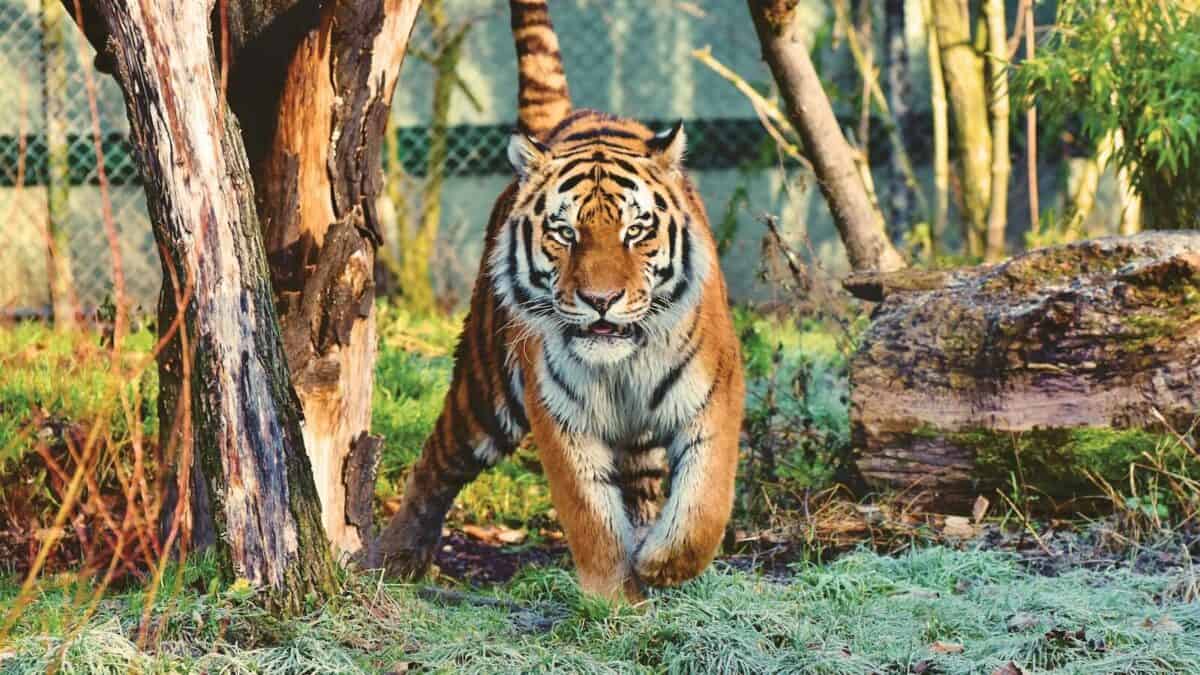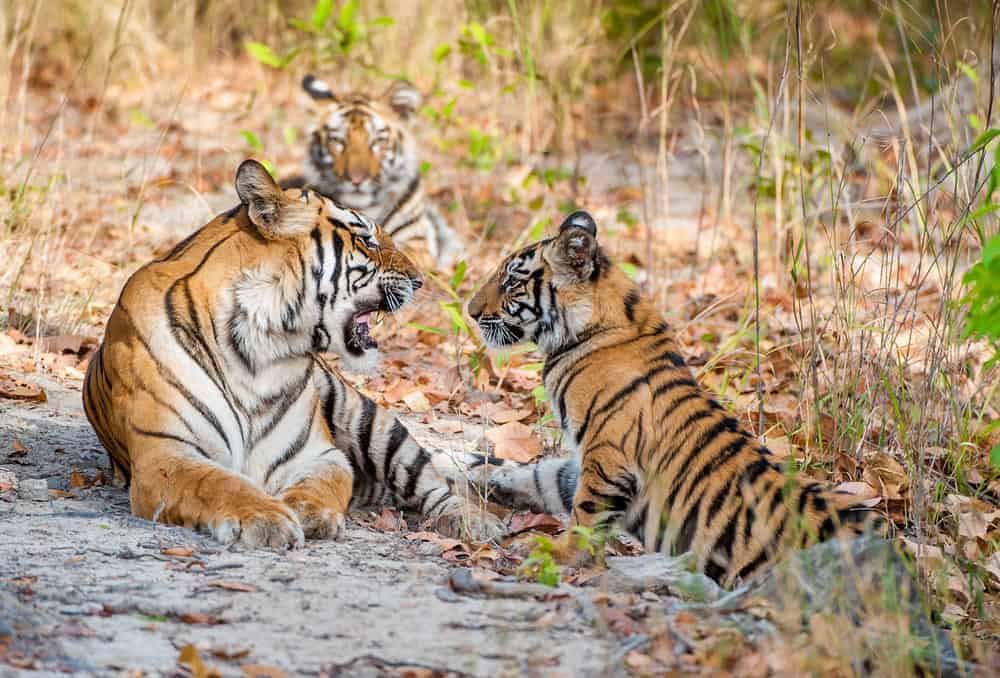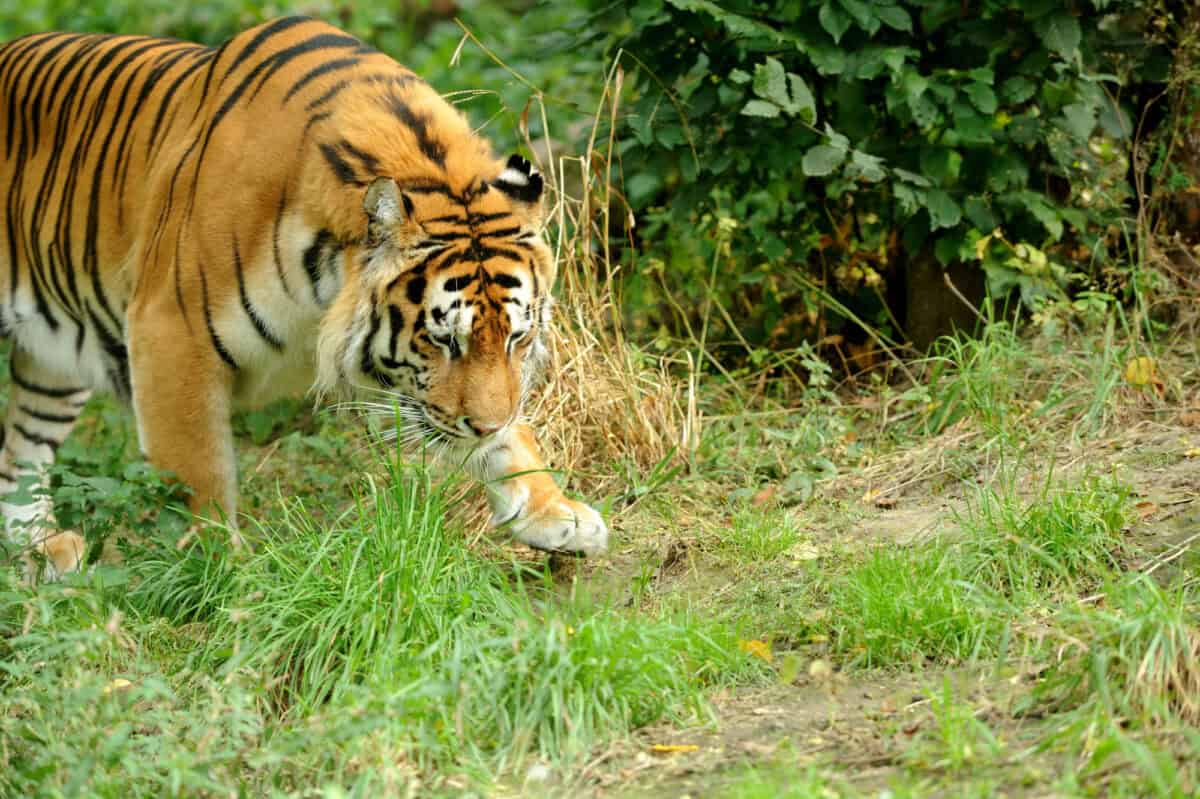Tigers, with their striking appearance and mesmerizing agility, have captured the human imagination for centuries. However, beyond their beauty lies a potent power that makes them one of the most formidable big cats in the animal kingdom. This article explores the various facets that contribute to the tiger’s lethal reputation, from their physical characteristics to their behavioral tendencies.
Unmatched Physical Strength

Tigers possess immense physical strength, which is a primary reason why they are considered so dangerous. Adult male tigers can weigh anywhere between 220 to 670 pounds, depending on the subspecies, and their powerful muscles enable them to take down prey much larger than themselves. This strength is not just limited to their bodies but extends to their jaw power, which is capable of crushing bones and is essential for hunting and consuming their prey.
Stealth and Ambush Hunting

One of the most dangerous aspects of a tiger is its ability to hunt with stealth. Tigers are silent hunters, utilizing the cover of night and dense forests to move undetected. Their striped coats provide camouflage, blending into the tall grasses and forest underbrush as they approach their prey. This ability to remain unseen until the moment of attack is a key factor in their efficacy as predators.
Incredible Speed and Agility

Despite their large size, tigers are incredibly fast and agile. They are capable of reaching speeds up to 40 miles per hour in short bursts, which is more than sufficient to catch most prey by surprise. Additionally, tigers can leap distances up to 30 feet, making them formidable opponents in both chase and attack scenarios.
Territorial Behavior

Tigers are solitary animals that maintain large territories, fiercely defending them from intruders. This territorial nature can lead to aggressive encounters with other tigers and animals that encroach on their space. The size of their territory varies depending on the availability of prey but can extend over hundreds of square miles, underlining the vast area they control and protect.
Apex Predators

As apex predators, tigers sit at the top of the food chain with no natural predators other than humans. This status allows them the liberty to hunt various prey, ensuring they have a diverse diet capable of sustaining their size and strength. Their role as apex predators is vital in maintaining the balance within their ecosystem.
Variety of Hunting Techniques

Tigers employ various hunting techniques that contribute to their reputation as lethal predators. These include stalking their prey over long distances, using swipes of their powerful paws to disable animals, and even drowning their prey if the hunt takes them to watery terrains. This versatility indicates a high level of intelligence and adaptability in hunting strategies.
Heightened Senses

Their heightened senses, particularly their acute vision and hearing, make them effective hunters. Tigers can see well in low light, which aids in their nocturnal hunting habits. Their hearing is also incredibly sensitive, allowing them to detect sounds of prey and predators from significant distances.
Alpha Communication Skills

Tigers communicate using a range of vocalizations such as roars, growls, chuffs, and purrs, which play crucial roles in marking territory, attracting mates, and warning others of their presence. This developed communication skills ensure they maintain control over their environment and interact effectively with other tigers.
Strong Family Bonds

Unlike many big cats, tigers exhibit strong family bonds among a mother and her cubs. The mother provides extensive care for her young, teaching them essential survival skills such as hunting and territory management. These formative experiences enable tiger cubs to grow into proficient hunters themselves, continuing the cycle of dangerous predators.
Adaptability to Various Habitats

Tigers are highly adaptable and can thrive in a range of environments, from dense tropical jungles to dry grasslands and cold taigas. This adaptability ensures their survival and spread across large geographic areas, often bringing them into contact with human settlements and creating potential conflict situations.
Human Interaction and Conflict

The expansion of human developments into tiger territories often results in human-tiger conflicts. As humans encroach upon their habitats, tigers can be forced into closer proximity with people, increasing the likelihood of aggressive encounters. This conflict highlights the danger tigers pose when their natural territories are threatened.
Conservation Challenges

Despite their fearsome reputation, tigers face numerous threats from poaching and habitat loss due to human activity. Conservation efforts are crucial in protecting these majestic animals and their ecosystems. Understanding and respecting their power while ensuring their survival is a challenging but essential task for conservationists worldwide.
In conclusion, tigers are undoubtedly one of the most dangerous big cats due to their immense strength, agile hunting techniques, and territorial nature. As apex predators, they play a vital role in their ecosystems, and while formidable, they also face significant threats from human activities. Efforts to ensure their conservation are vital, balancing the awe of their danger with the need for their protection.
- How Penguins Take Turns at Sea and Nest to Raise Chicks - August 9, 2025
- Dolphin Brains Compare to Those of Apes and Humans - August 9, 2025
- 14 Cutting-Edge Biotech Innovations That Will Shape the Future - August 9, 2025

